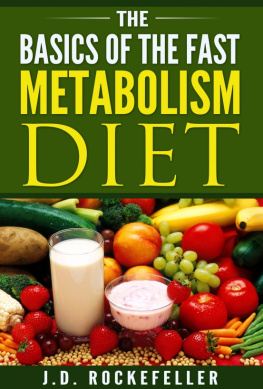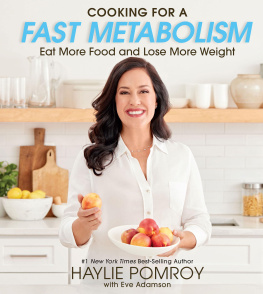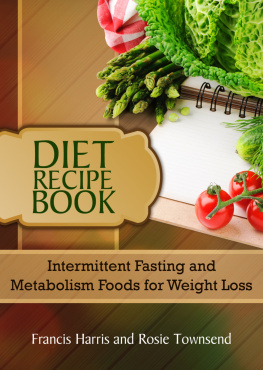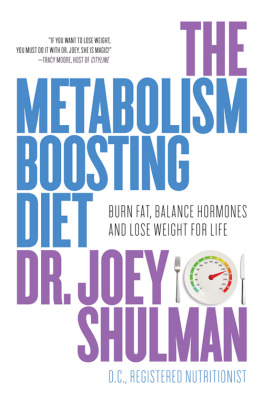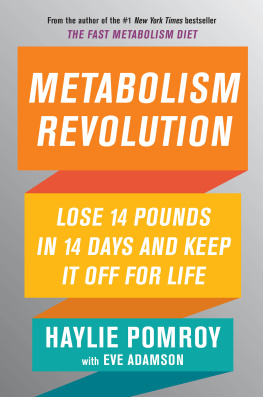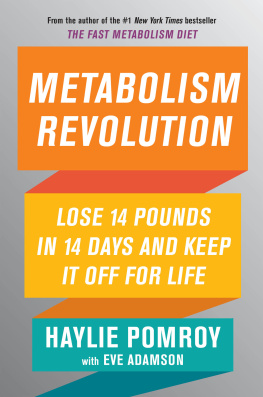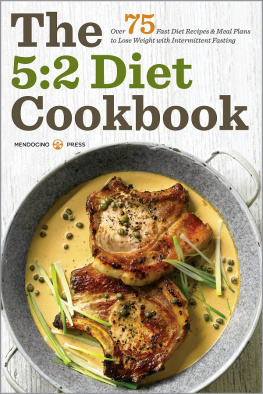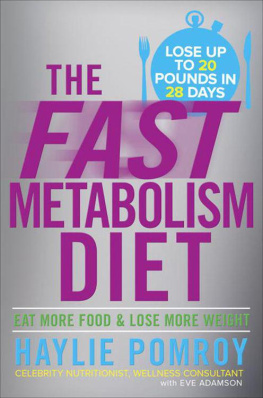The Basics of the
FAST METABOLISM DIET
J.D.ROCKEFELLER
Smashwords Edition
Copyright 2016 by J.D. Rockefeller.
No part of this publication may bereproduced, distributed, or transmitted in any form or by anymeans, including photocopying, recording, or other electronic ormechanical methods, or by any information storage and retrievalsystem without the prior written permission of the publisher,except in the case of very brief quotations embodied in criticalreviews and certain other non-commercial uses permitted bycopyright law.
Table of Contents
Introduction
The FastMetabolism Diet is a weight loss program devised by Hayley Pomroy.The diet intends to help you lose weight by consuming the rightfoods and resetting your metabolism. The diet goes through threephases - Unwind, Unlock, and Unleash - to help you lose 20 poundsin 28 days.
Pomroy believes that the low-calorie dietmost people have been following causes their body to go intostarvation mode, prompting it hold on to fat. This makes losingweight very difficult. Instead, many people continue to gain weighteven while dieting. The Fast Metabolism Diet aims at getting thebody out of this habit.
So, what is the Fast Metabolism Dietactually? What are the basic principles behind it? What foods canyou eat and what foods do you need to avoid? Find the answers toall these questions and much more in this book.
Chapter1 What is the Fast Metabolism Diet?
The Fast Metabolism Diet appeared for thefirst time in a book by the same name in 2013. The diet has beendesigned by a nutritionist named Haylie Pomroy. She believes thatall you need to lose weight is to speed up your metabolism.
Some people are simply born with a slowmetabolism. This means that all the calories they eat and the fatthey consume seems to stick to their bodies, making them more andmore overweight. On the other hand, there are others who seem toeat a lot without ever putting on weight. This is because they havea fast metabolism.
Our metabolism basically takes the calorieswe consume, combines them with the oxygen we breathe in, and thenconverts them into energy. This energy is then used to take care ofthe main bodily functions. The basal metabolic rate (BMR) is therate at which the body burns calories and converts it into energywhen you are resting.
If your BMR is high, you wont put on weight.But if your BMR is slow, you will continue to gain weightregardless how much you limit what you eat. The Fast MetabolismDiet, introduced by Pomroy in her book, aims at increasing thismetabolic rate by choosing the right foods.
Pomroy believes that by following low-caloriediets, people force their bodies to go into starvation mode andthat the body views this as an emergency situation. In an emergencysituation, the body holds on to the calories you consume and thisis what makes it difficult to lose excess pounds.
Chapter2 The Three Phases of the Diet
The objective is to reset your metabolism,and this is done by going through three phases. In all threephases, you avoid foods that irritate or inflame yourgastrointestinal tract, slow down your bowels, and create insulinresistance.
Phase I is the Unwind Phase. During thisphase you are letting your body know that the emergency situationis over and that it can now relax and begin to digest the food youeat instead of storing it. Since carbohydrates such as grains andfruit are easier to digest than fats and proteins, you eatcarbohydrates and keep the fat and protein content low.
Phase II is the Unlock Phase. During thisphase you want your body to release the stored fat to be used asfuel. This is why you eat a diet high in protein and low incarbohydrates.
Phase III is the Unleash Phase. Once the fatis unlocked, the body begins to burn both the stored fat and thefat you are currently eating. So, you eat a diet that contains ahigh amount of healthy fats and moderate amount ofcarbohydrates.
The diet lasts for 4 weeks or 28 days. Unlikemany other diets, you dont go from the first phase to the secondand then to the third. Instead, you do all the phases during allfour weeks.
This means that you do specific phases onspecific days of the week. So, on Monday and Tuesday you are onphase I. On Wednesday and Thursday, you are on phase II. FromFriday to Sunday, you are on phase III.
Pomroy recommends starting the diet on aMonday so that by the time the weekend is there, you are frre toeat a wider range of foods. But if the schedule specified by theauthor doesnt work for you, just change it to suit your needs.Just remember that days 1 and 2 are phase 1, days 3 and 4 are phase2, and days 5, 6, and 7 are phase 3. Then you go back to phase 1 onday 8.
Chapter 3 General Guidelines on PortionSizes
Pomroy believesthat if you want to lose a lot of weight, you will need to eat moreto boost your metabolism. This means that the first thing that youwill need to do before going on this diet is find out how muchweight you want to lose.
The Fast Metabolism Diet specifies portionsizes that need to be followed for each phase. But the portionsizes specified for each phase are based on the assumption that youwant to lose 20 pounds. So, what if you want to lose morepounds?
It is fairly easy to fix portion sizes usingthe guidelines specified for people who want to lose 20 pounds. Ifyou want to lose 20 pounds, you eat 1 basic portion. If you have tolose more than 20 but less than 40 pounds, you eat 1 portion. Ifyou want to lose more than 40 pounds, you eat 1 portion and 2portions of veggies.
As you continue to lose weight, you will needto reduce portion sizes. So, if you started by wanting to lose 45pounds, but now only have 38 pounds left to lose, you cut down theportion from 1 portion + 2 portions veggies to 1 portion. Whenyou lose more weight and your target weight is within 20 poundsaway, you reduce it further to 1 portion.
In short, find out how many pounds you wantto lose. Then pick the right portion size for you. As you continueto lose weight, keep reducing the portions until you are down toone basic portion.
Chapter 4 Foods to Avoid During AllPhases
Certain foods areoff-limits during all the phases of the diet. Take a look at thelist below and avoid these at all costs during the four weeks.

Photo 1: Wheat is not allowed on the FastMetabolism Diet
Wheat All wheat products, includingbread, rolls, cakes, cookies, etc. You can eat sprouted wheat.
Corn All corn products, includingtortillas, chips, cereals, grits, popcorn, sweet corn, etc.
Dairy All dairy products, including milk,cheese, yogurt, whey, etc. Fat-free dairy products are also to beavoided since they slow down the metabolism.
Soy All soy products, including tofu,miso, tempeh, etc. Pomroy suggests two exceptions here: tamari andBragg Liquid Aminos.
Refined Sugar No refined sugar should beused in any of your foods.
Caffeine Hot or cold coffee. Evendecaffeinated coffee should be avoided.
Alcohol
Dried fruits
Fruit juices
Artificial sweeteners Only natural ones,such as Stevia or Truvia are allowed.
Diet foods, fat-free foods, zero-caloriefoods Should be avoided at all costs, be they packaged orfrozen.
Lets now find out in detail about the threephases, their purpose, and the foods that we can eat.
Chapter 5 Phase I: Unwind TheObjective of the Phase
Phase I of theFast Metabolism Diet aims at calming the adrenal glands andreducing stress. The adrenal glands are located at the top of ourkidneys. When we are under stress, our adrenal glands secrete ahormone called cortisol, also known as the stress hormone.

